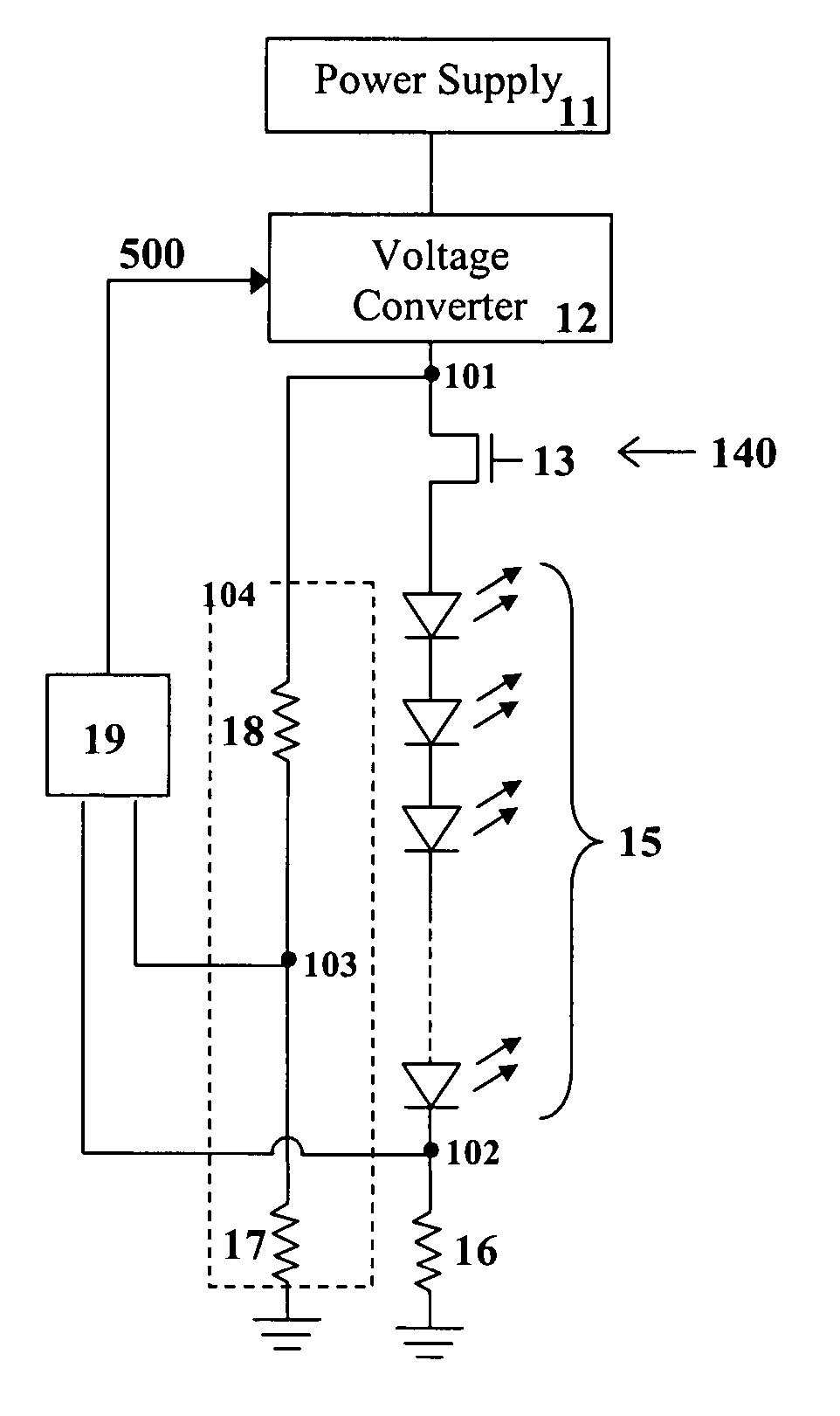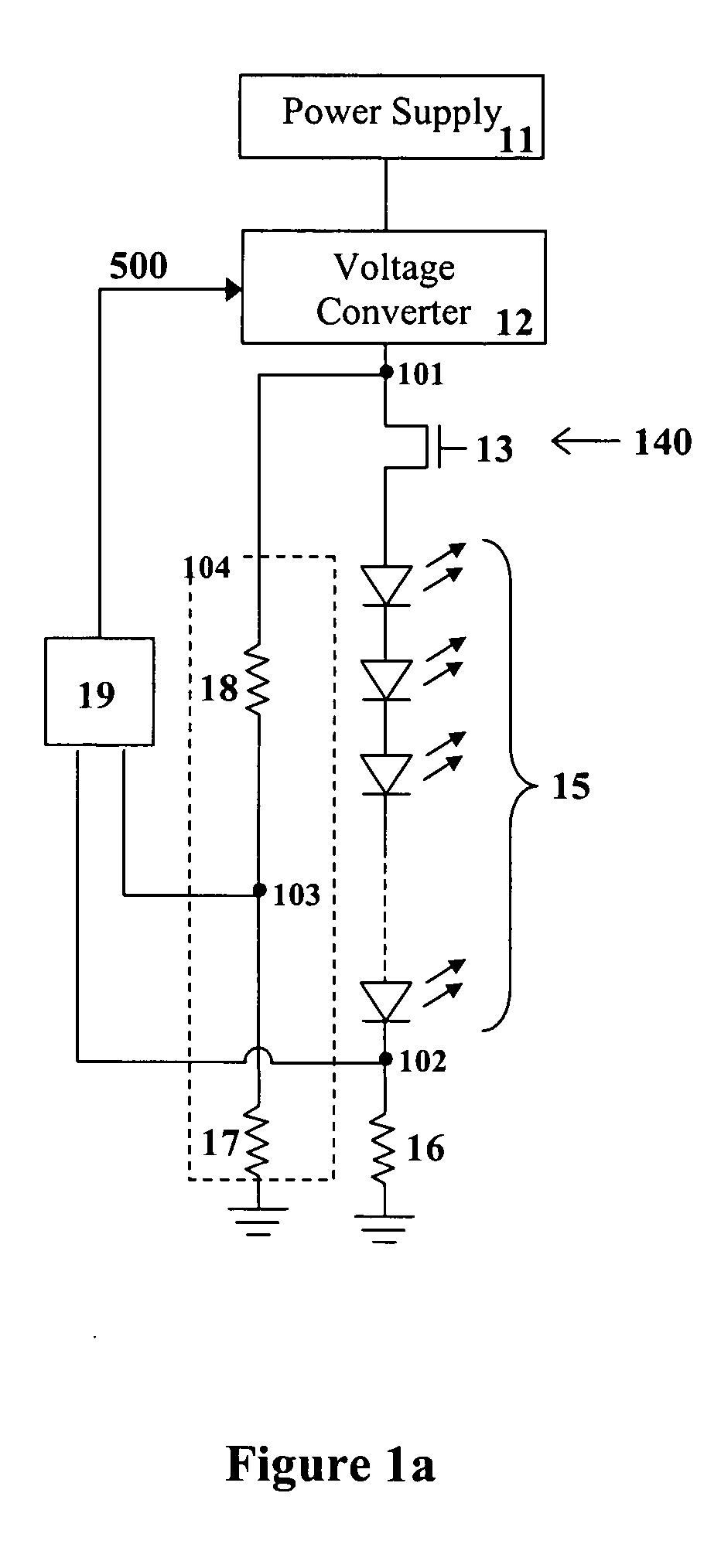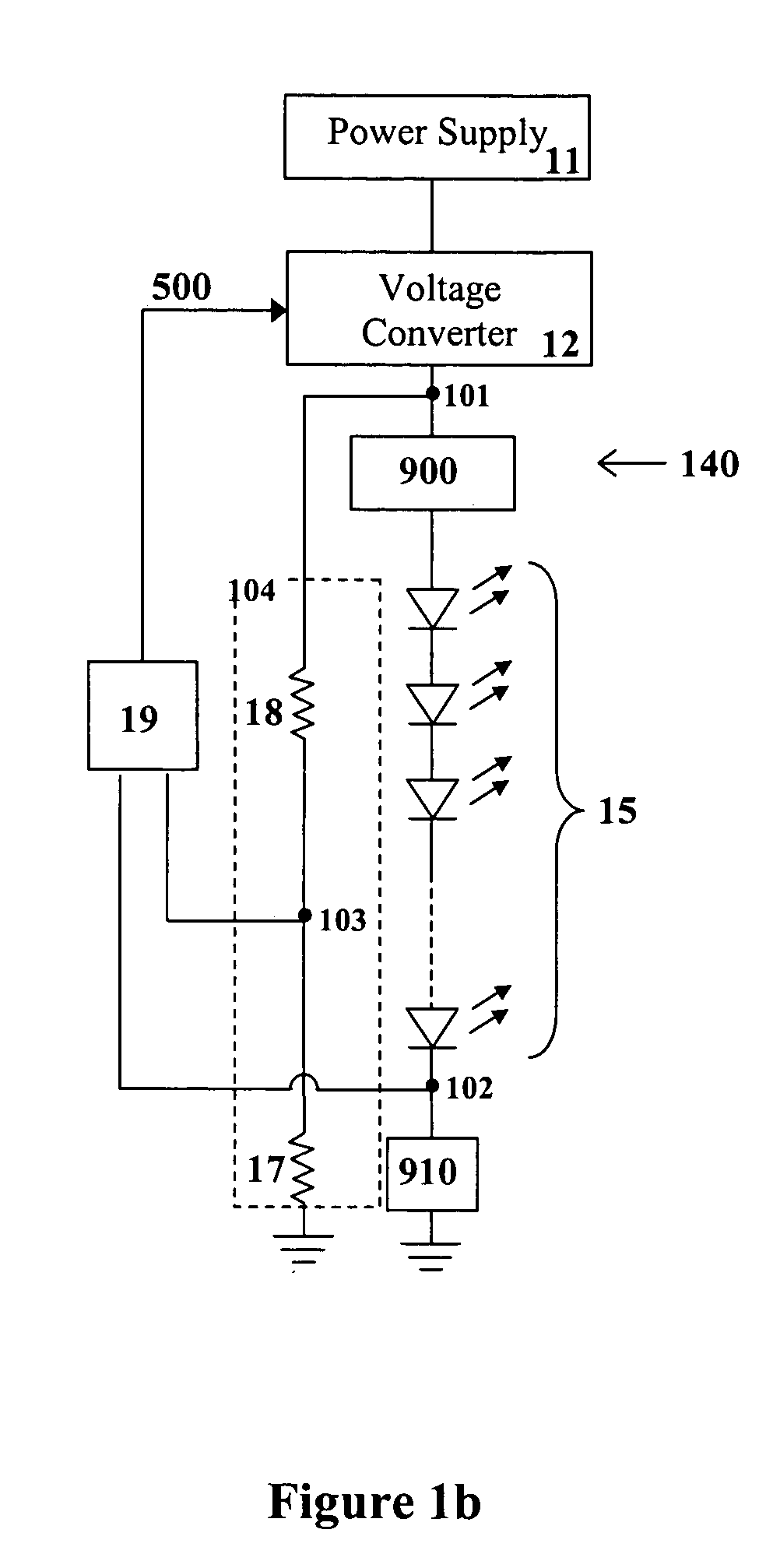Switched constant current driving and control circuit
a constant current driving and control circuit technology, applied in the direction of electric variable regulation, process and machine control, instruments, etc., can solve the problems of large power consumption of control circuits, large power devices and heat sinks, and inability to achieve 0 to 100% dimming, etc., to achieve the effect of reducing thermal cycling effects, avoiding excessive power loss, and balancing current distribution
- Summary
- Abstract
- Description
- Claims
- Application Information
AI Technical Summary
Benefits of technology
Problems solved by technology
Method used
Image
Examples
Embodiment Construction
Definitions
[0037] The term “power supply” is used to define a means for providing power from a power source to electronic circuitry, the power being of a particular type, i.e. AC or DC, and magnitude.
[0038] The power source input to the power supply may be of any magnitude and type, and the output from the power supply may also be of any magnitude and type.
[0039] The term “voltage converter” is used to define a type of power supply that is used to convert an input voltage from one magnitude to an output voltage of another magnitude.
[0040] The term “electronic device” is used to define any device wherein its level of operation is dependent on the current being supplied thereto. Examples of an electronic device includes a light-emitting element, DC motor, laser diode and any other device requiring current regulation as would be readily understood by a worker skilled in the art.
[0041] The term “light-emitting element” is used to define any device that emits radiation in a particu...
PUM
 Login to View More
Login to View More Abstract
Description
Claims
Application Information
 Login to View More
Login to View More - R&D
- Intellectual Property
- Life Sciences
- Materials
- Tech Scout
- Unparalleled Data Quality
- Higher Quality Content
- 60% Fewer Hallucinations
Browse by: Latest US Patents, China's latest patents, Technical Efficacy Thesaurus, Application Domain, Technology Topic, Popular Technical Reports.
© 2025 PatSnap. All rights reserved.Legal|Privacy policy|Modern Slavery Act Transparency Statement|Sitemap|About US| Contact US: help@patsnap.com



